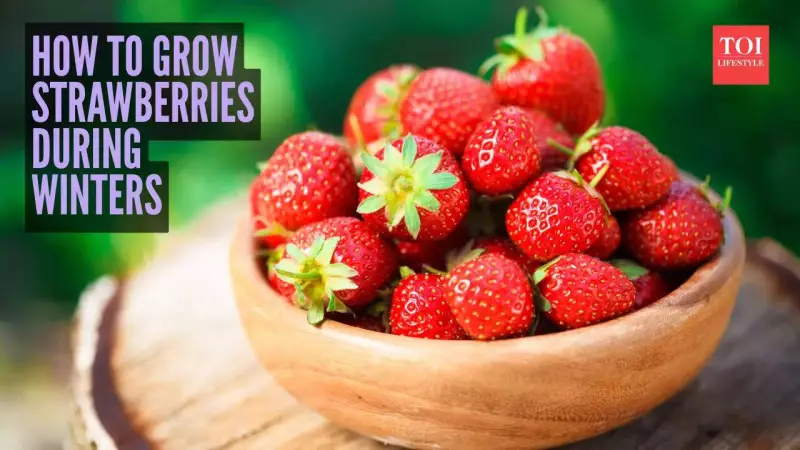
As winter approaches, many urban gardeners wonder if they can continue their gardening passion during the colder months. The good news is that growing strawberries in pots on your balcony during winter is not only possible but can be incredibly rewarding. With the right approach, you can enjoy fresh, sweet berries right from your home even when temperatures drop.
Choosing the Perfect Strawberry Varieties for Winter
Selecting cold-tolerant varieties is crucial for successful winter strawberry cultivation. For balcony gardening during colder months, experts recommend specific varieties that can handle fluctuating winter temperatures. The ideal choices include Chandler, Sweet Charlie, Camarosa, or day-neutral types like Albion and Seascape.
What makes day-neutral strawberries particularly valuable for winter gardening is their ability to continue fruiting in cool weather. These varieties adapt well to container growing and are perfect for small urban spaces where gardening real estate is limited.
Setting Up Your Strawberry Pots Correctly
The foundation of successful strawberry growing begins with proper pot selection and soil preparation. Your containers should be at least 10-12 inches deep and must have multiple drainage holes to prevent root rot, which becomes a significant risk during winter months.
Strawberries thrive in loose, well-draining soil that's rich in organic matter. Create an ideal growing medium by mixing potting soil with cocopeat and compost. This combination ensures proper moisture retention without waterlogging, which is especially important during winter when evaporation rates are lower.
Essential Winter Care and Protection Strategies
When planting your strawberries, position each plant so the crown sits just above the soil line. Proper spacing in larger containers ensures good airflow between plants. After planting, water thoroughly and maintain slightly moist soil conditions.
Sunlight remains critical even during winter, with strawberries requiring at least 5-6 hours of daily sunlight. Position your pots on a south-facing balcony to maximize light exposure. If natural light is limited, rotate pots weekly or use reflective surfaces to redirect available light toward your plants.
Winter watering requires careful attention. Keep soil lightly moist but never wet, as overwatering in cold weather can lead to fungal problems and root rot. Allow the top layer of soil to dry slightly between watering sessions, and use a small watering can for gentle irrigation to keep the plant crown dry.
While strawberries generally tolerate cool weather well, balcony plants benefit from extra protection during particularly cold nights. Position pots near walls, wrap them in burlap, or add mulch around the base using straw or dried leaves. Most importantly, protect your plants from harsh winter winds that can damage foliage and roots.
Winter Fertilization for Healthy Growth
Feeding your strawberries during winter requires a balanced approach. Apply a mild, balanced fertilizer every 4-6 weeks to support root development. Avoid heavy nitrogen fertilizers that promote soft leaf growth vulnerable to cold damage.
Compost tea or diluted liquid organic fertilizers work exceptionally well for container strawberries during winter months. These natural options provide balanced nutrition without overwhelming the plants during their slower growth period.
Winter planting offers the advantage of allowing strawberry roots to establish themselves before spring growth accelerates. Balcony conditions often provide natural protection from the harshest weather, giving your plants a head start for the coming growing season. With proper care and attention during winter months, your strawberry plants will emerge healthier and more productive when spring arrives.





